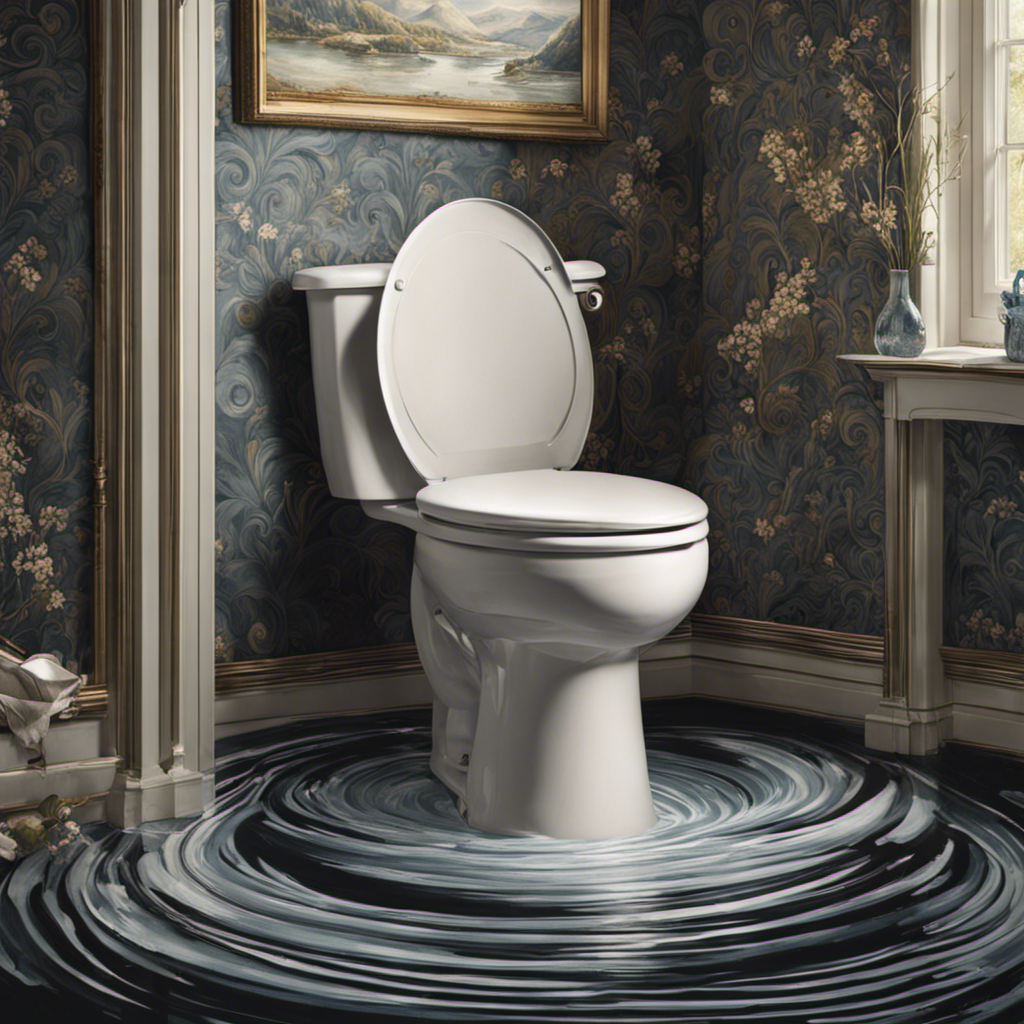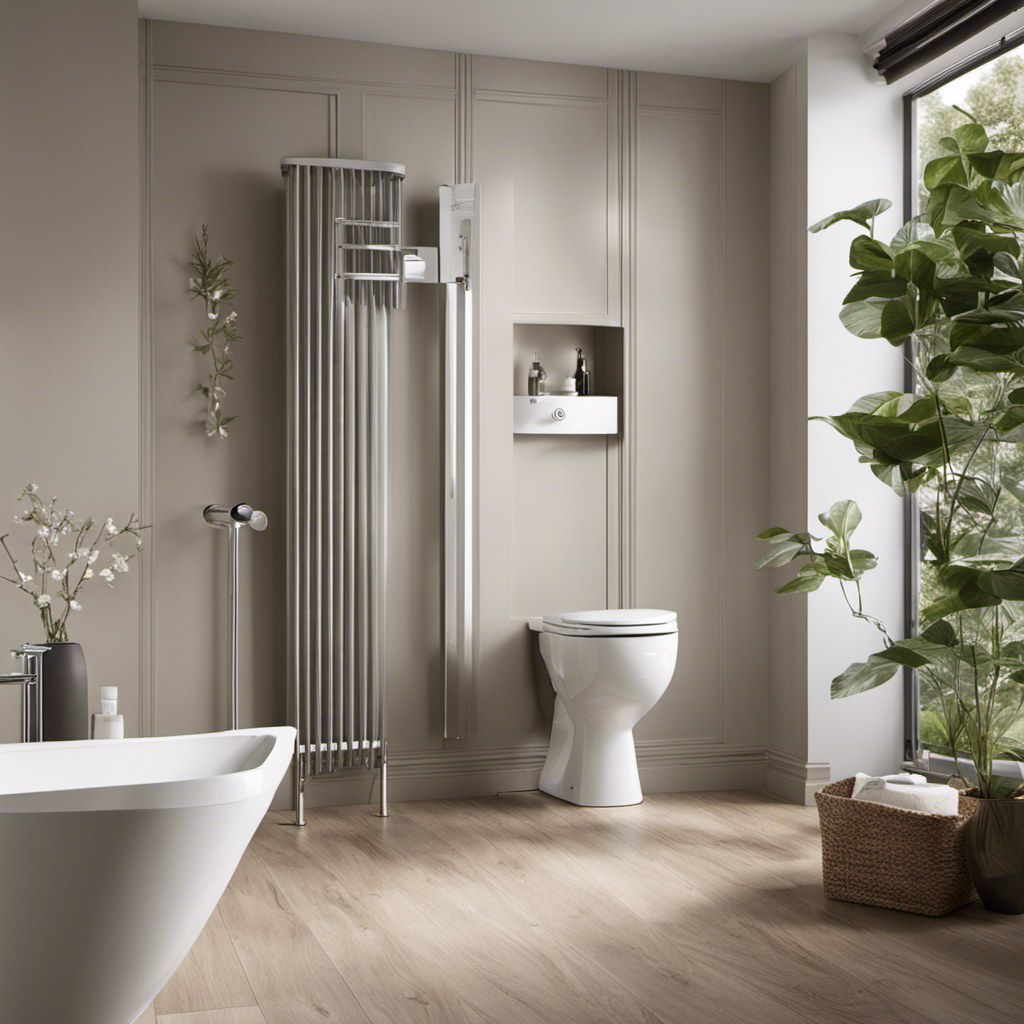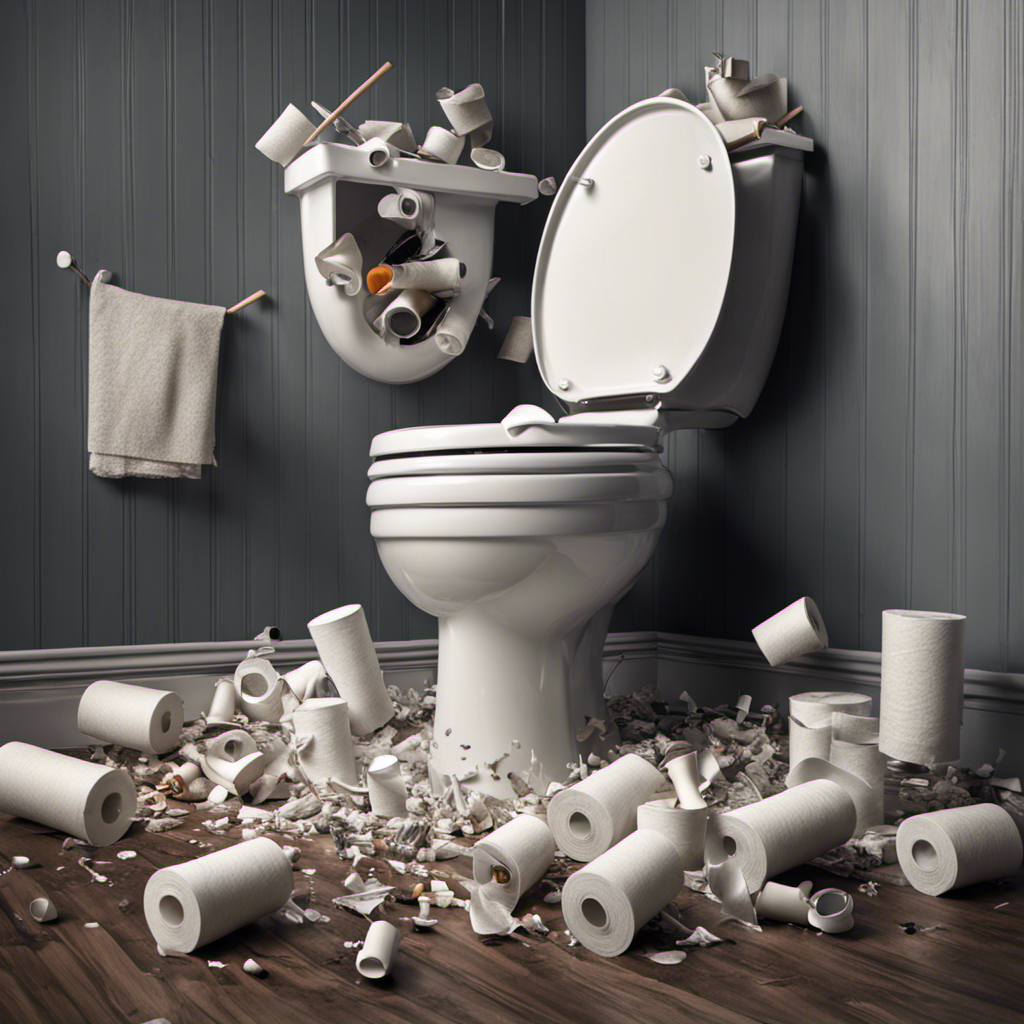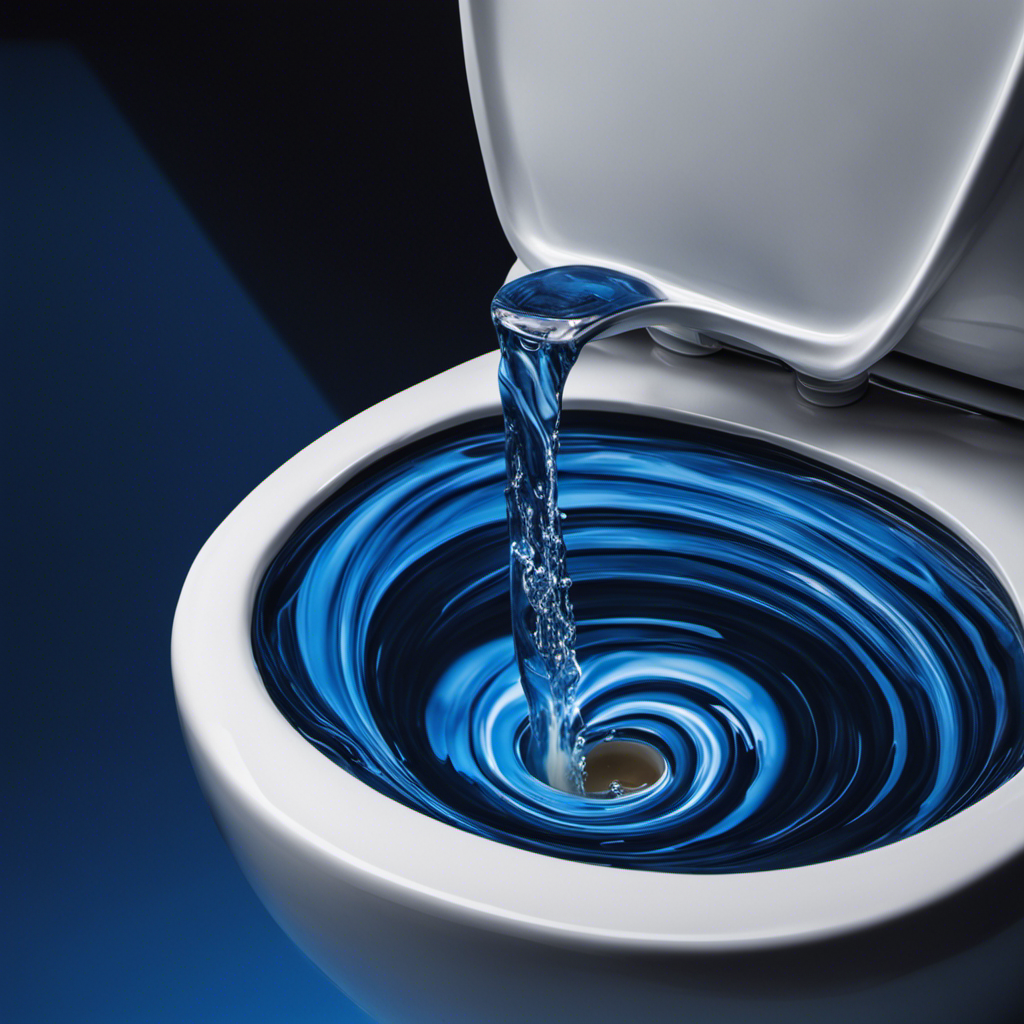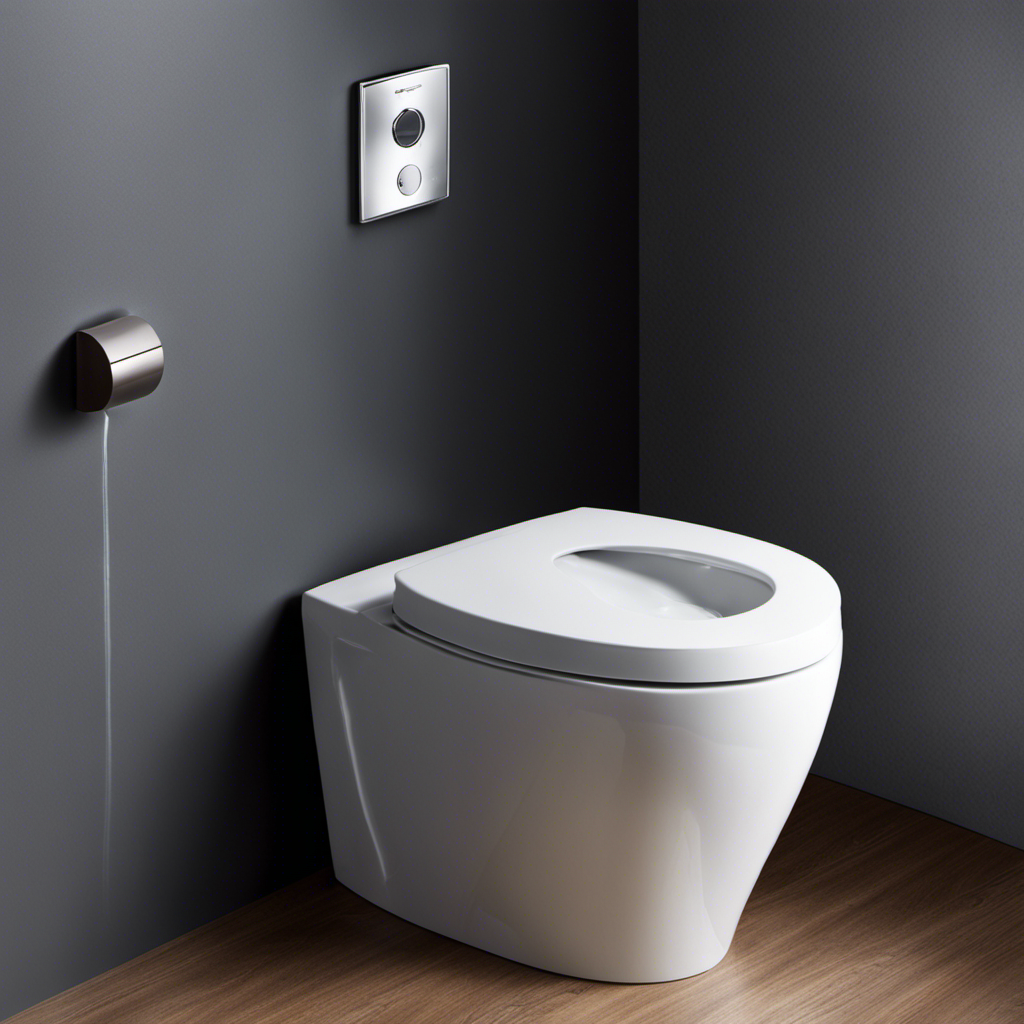When I flush the toilet and the water starts rising, panic sets in. It’s an all-too-common problem that can leave us feeling frustrated and unsure of what to do next.
In this article, I will delve into the common causes behind this phenomenon and provide you with a step-by-step guide on how to address and prevent toilet water overflow.
By understanding the inner workings of the toilet bowl fill valve and following some troubleshooting tips, you’ll be able to tackle this issue with confidence and keep your bathroom running smoothly.
Key Takeaways
- Clogged toilet or malfunctioning fill valve are common causes of rising toilet water after flushing.
- Proper maintenance of the fill valve is essential to prevent overflow and ensure efficient flushing.
- Steps to take when toilet water starts rising include stopping the water flow, assessing the problem, unclogging the toilet, and checking the fill valve.
- To prevent toilet water overflow, regularly inspect and maintain the fill valve, address clogs promptly, and adjust the water level using the adjustment screw on the fill valve.
Common Causes of Toilet Water Rising After Flushing
If you’ve noticed the water rising in your toilet after flushing, there are several common causes that could be to blame. One of the most common toilet plumbing problems is a clogged toilet. This can occur when too much toilet paper or other debris gets flushed down the drain, causing a blockage.
Another possible cause is a problem with the toilet’s flapper valve. This valve is responsible for controlling the flow of water from the tank to the bowl. If it is not sealing properly, water can leak into the bowl, causing the water level to rise.
Additionally, a malfunctioning fill valve can also lead to water rising after flushing. This valve is responsible for refilling the tank with water after each flush.
Understanding these common causes can help in fixing a clogged toilet and prevent further issues with water rising after flushing.
Now, let’s move on to understanding the role of the toilet bowl fill valve.
Understanding the Role of the Toilet Bowl Fill Valve
Understanding the role of the toilet bowl fill valve is crucial when dealing with a rising water level after flushing. The fill valve, located inside the toilet tank, controls the water flow into the bowl after each flush. Here are three important reasons why proper maintenance of the fill valve is essential for maintaining the correct water levels in the toilet bowl:
-
Prevents overflow: A malfunctioning fill valve can cause the water level to rise excessively, leading to an overflow and potential water damage.
-
Ensures efficient flushing: The fill valve regulates the amount of water that enters the bowl, ensuring a sufficient amount for an effective flush.
-
Saves water: By properly adjusting the fill valve, you can conserve water by avoiding unnecessary wastage.
Regularly inspecting and maintaining the fill valve is crucial for proper toilet bowl maintenance and maintaining the correct water levels, preventing potential issues like overflowing and water wastage.
Steps to Take When Toilet Water Starts Rising
When the water level in your toilet bowl begins to rise, it’s important to take immediate action to prevent potential overflow and damage. Ignoring this issue can lead to a messy and costly cleanup.
To unclog a toilet and address a malfunctioning toilet fill valve, follow these steps:
-
Stop the water flow: Locate the shut-off valve behind the toilet and turn it clockwise to stop the water supply.
-
Assess the problem: Look for signs of a clogged toilet, such as slow drainage or gurgling noises. If the issue persists, it may be a malfunctioning fill valve.
-
Unclog the toilet: Use a plunger or a toilet auger to remove any blockages. Apply firm but gentle pressure to dislodge the obstruction.
-
Check the fill valve: Inspect the fill valve for signs of malfunction, such as excessive noise, leakage, or inconsistent water levels. Replace the fill valve if necessary.
How to Prevent Toilet Water From Overflowing
To prevent an overflow, make sure to regularly inspect and maintain the toilet fill valve, as well as address any clogs promptly. Maintaining the proper water level in your toilet is crucial to preventing any potential overflow.
Here are some key steps to ensure toilet water overflow prevention and maintain the correct water level:
-
Check the fill valve: Ensure that the fill valve is functioning properly by inspecting it for any signs of damage or wear. Replace it if necessary.
-
Adjust the water level: Use the water level adjustment screw on the fill valve to set the water level to the appropriate height, usually marked on the overflow tube.
-
Clear any clogs: Regularly check for and remove any clogs in the toilet drain using a plunger or drain snake.
By following these steps, you can effectively prevent toilet water overflow and maintain the proper water level in your toilet.
In the next section, we will discuss troubleshooting tips for dealing with a rising toilet water level.
Troubleshooting Tips for Dealing With a Rising Toilet Water Level
If the water level in your toilet keeps increasing, it’s important to check for any clogs in the drain and clear them promptly. One of the emergency measures for dealing with a clogged toilet is using a plunger. Place the plunger over the drain hole and push down firmly, then pull up quickly to create suction. Repeat this motion several times until the clog is cleared.
Another possible cause of a rising water level is a faulty toilet flapper. Signs of a faulty flapper include water continuously running into the bowl or a weak flush. To fix this issue, simply replace the flapper. Turn off the water supply to the toilet, remove the old flapper, and install a new one according to the manufacturer’s instructions.
Frequently Asked Questions
Can a Clogged Sewer Line Cause the Toilet Water to Rise After Flushing?
Yes, a clogged sewer line can cause the toilet water to rise after flushing. This can happen due to a toilet flapper malfunction, which prevents proper drainage. It is important to address this issue promptly to avoid health risks.
What Should I Do if the Toilet Water Starts Rising, but There Is No Blockage in the Toilet Bowl?
If the toilet water starts rising without a blockage in the bowl, I must act quickly to prevent an overflow. Troubleshooting the issue may involve checking the fill valve, flapper, or even the sewer line for potential problems.
Is It Possible for a Malfunctioning Toilet Flapper to Cause the Water Level to Rise After Flushing?
Yes, a malfunctioning toilet flapper can cause the water level to rise after flushing. It is important to promptly address this issue to prevent any further damage. Regular toilet flapper repair and water level maintenance can help prevent such problems.
Are There Any Health Risks Associated With Toilet Water Rising After Flushing?
There can be health risks associated with toilet water rising after flushing. The contamination of toilet water can lead to the spread of harmful bacteria and viruses, posing potential health implications from sewage backup.
Can Using Too Much Toilet Paper Cause the Water Level to Rise in the Toilet Bowl?
Using excessive toilet paper can indeed cause the water level to rise in the toilet bowl. To prevent this, consider using toilet paper alternatives like bidets or wet wipes, and always flush in small increments.
Conclusion
In conclusion, when the toilet water starts rising after flushing, it can be a daunting and frustrating experience. Just like a tidal wave threatening to engulf everything in its path, the rising water can cause panic and stress.
However, understanding the common causes and taking the necessary steps can help you tackle this issue effectively. By being proactive and implementing preventive measures, you can ensure that your toilet never overflows again.
Remember, knowledge is power, and with the right information, you can conquer any plumbing challenge that comes your way.
